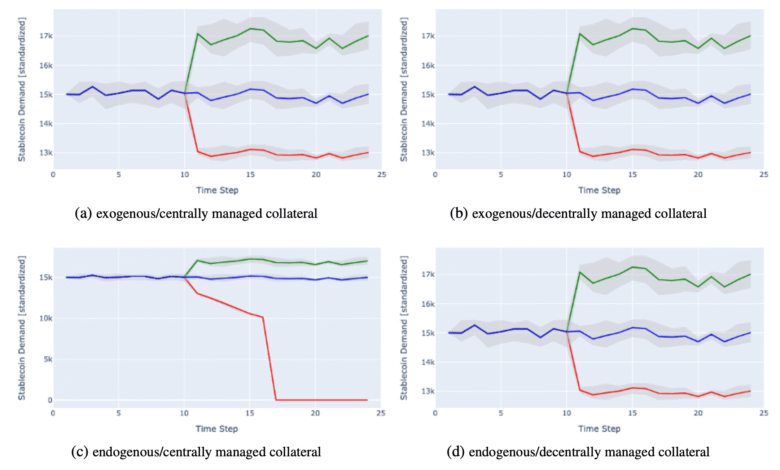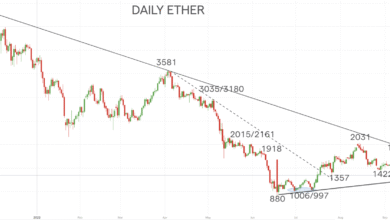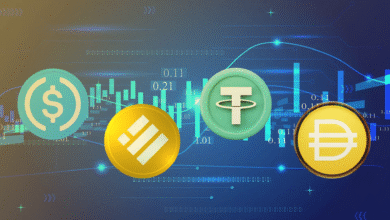Stablecoin Demand Fuels Growth in US Treasury Bonds

Stablecoin demand is surging, significantly impacting U.S. Treasury securities and reshaping fiscal strategies within the financial landscape. As the U.S. Treasury engages with this burgeoning market, the implications of stablecoins on digital assets cannot be overlooked. Recent discussions reveal that the rapid rise of these digital currencies is influencing the bond market in unprecedented ways, creating new avenues for investors. With major stakeholders acknowledging stablecoins’ potential to drive interest in Treasury instruments, regulatory clarity is becoming increasingly vital. As this dynamic unfolds, monitoring the intersection of stablecoins and traditional finance will be crucial for understanding future market directions.
The popularity of cryptocurrency-backed assets, often referred to as digital currencies, is influencing how traditional financial markets operate, particularly in relation to U.S. government securities. This change in demand reflects a broader trend in the evolution of money and investment, with crypto-stablecoins challenging conventional asset classes. As the fiscal landscape shifts, the interaction between these digital assets and existing economic frameworks becomes more significant. The recent focus on stablecurrency regulations demonstrates the growing acceptance and integration of this financial innovation into mainstream economic strategies. This convergence is redefining roles within the bond market and presenting fresh opportunities for investors and regulators alike.
The Rise of Stablecoins and Their Influence on Treasury Securities
The emergence of stablecoins has marked a significant evolution in the landscape of digital assets, particularly in how they are reshaping demand for U.S. Treasury securities. These digital currencies, designed to maintain a stable value against traditional currencies, are becoming increasingly popular among investors. Their rise has led to enhanced interest in U.S. Treasury instruments, as stablecoin providers actively seek to hold these low-risk assets. As mentioned in the Treasury Borrowing Advisory Committee’s minutes, the regulatory clarity surrounding stablecoins could further enhance their adoption, potentially raising the current levels of Treasury demands.
In recent discussions, financial experts noted that the stronghold of stablecoin providers in the bond market signifies a shift in investors’ strategies, transitioning from traditional forms of cash management to embracing digital alternatives. This shift not only impacts how investors allocate assets but also offers insights into how fiscal strategies may evolve to accommodate this growth, reinforcing the connection between stablecoins and the U.S. Treasury. As these assets continue to converge, understanding their role in Treasury demand becomes critical for both market participants and policymakers.
Frequently Asked Questions
How is stablecoin demand influencing the U.S. Treasury bond market?
Stablecoin demand is significantly impacting the U.S. Treasury bond market by increasing interest in Treasury securities among stablecoin providers. As these digital assets gain traction, their issuers are expected to maintain substantial holdings of Treasury bills, which could lead to heightened demand and influence fiscal strategy.
What role do stablecoins play in shaping fiscal strategies regarding U.S. Treasury securities?
Stablecoins are reshaping fiscal strategies by driving a new wave of demand for U.S. Treasury securities. As stablecoin adoption grows, the need for regulatory clarity around these digital assets will likely prompt more investment in Treasuries, thus altering traditional allocation frameworks within financial markets.
Can stablecoin adoption impact the demand for traditional U.S. Treasury bills?
Yes, stablecoin adoption can significantly impact demand for traditional U.S. Treasury bills. As stablecoin providers often seek safe-haven assets like Treasury securities, increased stablecoin usage is likely to shift allocations within the bond market, potentially enhancing overall Treasury demand.
What are the implications of stablecoins for the fiscal strategy of the U.S. Treasury?
The implications of stablecoins for the fiscal strategy of the U.S. Treasury include a potential increase in Treasury purchases as stablecoin issuers navigate regulatory landscapes. The integration of stablecoins into the financial ecosystem could also influence monetary policy and fiscal management, indicating a need for adaptive strategies.
How do stablecoins interact with U.S. Treasury securities and bond market dynamics?
Stablecoins interact with U.S. Treasury securities by serving as vehicles for liquidity and investment within the bond market. Their growth may lead to traditional financial instruments merging with digital assets, thereby altering market dynamics and potentially reshaping capital flow towards Treasury securities.
What does the Treasury Borrowing Advisory Committee say about stablecoin demand?
The Treasury Borrowing Advisory Committee emphasizes that growing stablecoin demand could reshape the landscape for U.S. Treasury securities. They noted that increased stablecoin holdings among providers might necessitate a revised approach to managing fiscal strategy and Treasury supply.
Are stablecoins likely to compete with money market funds for Treasury securities?
Stablecoins are emerging as potential competitors to money market funds for Treasury securities, as they increasingly offer similar functionalities. The distinction between these financial products is becoming increasingly blurred, suggesting a significant shift in how Treasury securities are accessed and utilized.
What could be the future of stablecoin demand impacting U.S. Treasury borrowing?
The future of stablecoin demand could significantly impact U.S. Treasury borrowing by creating new patterns of investment and resource allocation. If legislation promotes stablecoin growth, we could see an increase in Treasury purchases, influencing overall debt management strategies.
How might legislative changes affect stablecoin demand and U.S. Treasury securities?
Legislative changes aimed at providing regulatory clarity for stablecoins could enhance their demand significantly. As stablecoin providers gain more structure and confidence, their associated investments in U.S. Treasury securities will likely increase, reshaping the fiscal landscape.
| Key Point | Details |
|---|---|
| Stablecoin Impact on Treasury | Stablecoins are reshaping demand for U.S. Treasury securities, influencing fiscal strategies. |
| Meeting Highlights | The April 29, 2025, meeting focused on stablecoins and their effects on financial markets. |
| Expansion of Stablecoins | The rapid growth of stablecoins is revolutionizing traditional financial structures and driving interest in Treasury instruments. |
| Treasury Holdings by Stablecoins | Stablecoin providers are already significant holders of Treasury securities, potentially leading to regulatory mandates. |
| Interest-Bearing Stablecoins | Debates exist on interest-bearing stablecoins posing risks to traditional banks while enhancing global dollar utility. |
| Regulatory Considerations | Legislation may prevent paying yields to stablecoin holders, impacting the integration of digital assets. |
Summary
Stablecoin Demand is significantly influencing the landscape of U.S. Treasury securities, presenting both opportunities and challenges for the financial market. As the stablecoin sector evolves, its growth trajectory requires close monitoring by Treasury officials and market players alike. The interaction between stablecoins and regulatory frameworks is critical, as it can reshape fiscal strategies and impact the future dynamics of U.S. debt management.




